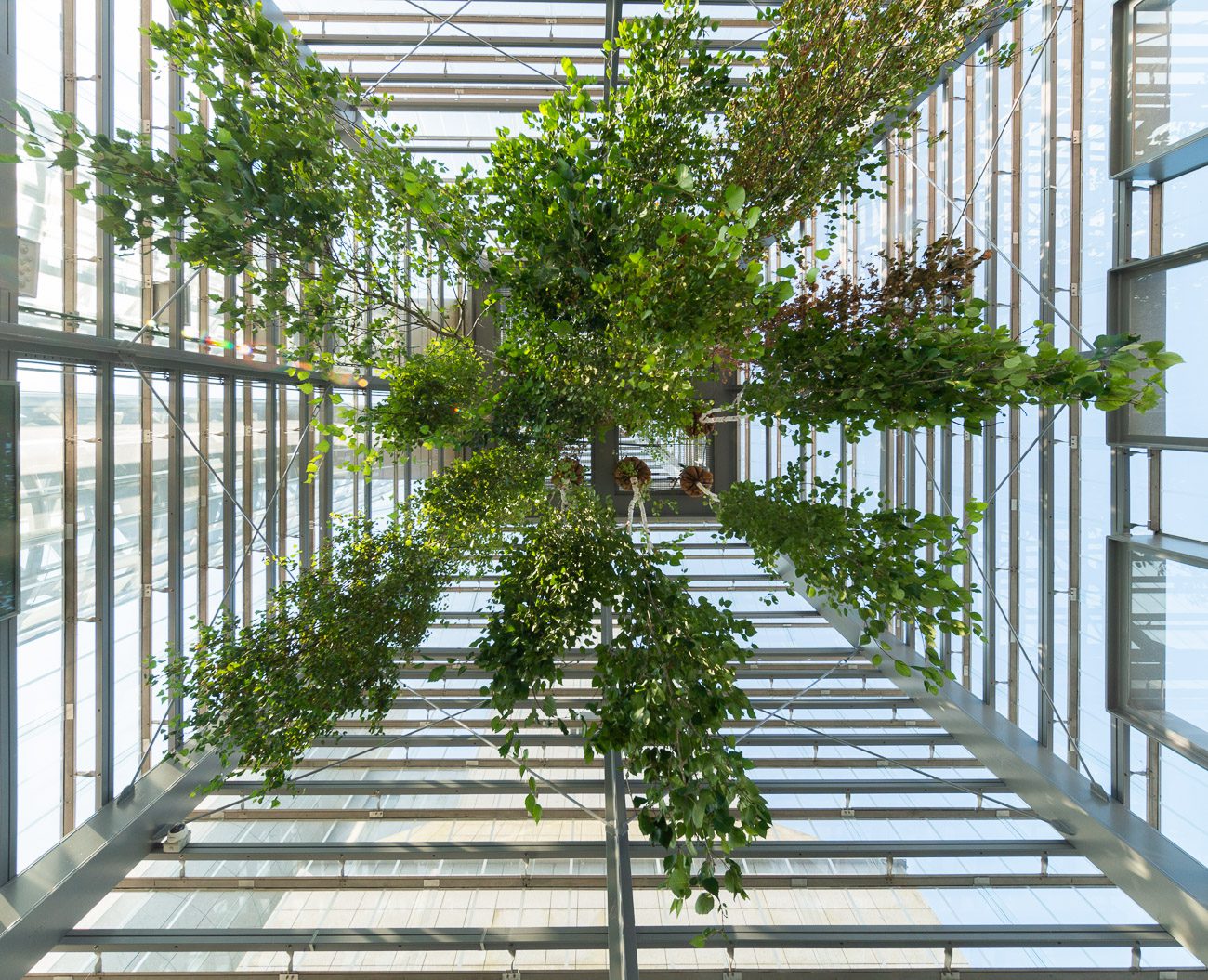Betula pendula
LaND30


Short description
Betula pendula is an ephemeral installation created in 2018 at the Hedjuk Towers, part of the Cidade da Cultura de Galicia in Santiago de Compostela. The project serves as a critical and sensory reflection on a persistent and open wound in the Galician landscape: forest fires.
Galicia is one of the European regions with the largest forested areas—a territory where forests are not only a defining visual and cultural element, but also a vital ecological, economic, and emotional resource. However, this reality is constantly threatened by recurring tragedy: each summer, wildfires consume thousands of hectares of woodland, turning what should be a shared heritage into a symbol of abandonment, grief, and helplessness. Betula pendula seeks to expose this tension, placing the beauty and vitality of forests in dialogue with their vulnerability and destruction.
The intervention took place inside the two Hejduk Towers, designed by American architect John Hejduk, which are characterized by their formal and material duality: one made of stone and the other of glass. This opposition inspired an artistic proposal that uses the towers as both physical and conceptual frameworks for exploring contrasts—life and death, nature and fire, transparency and darkness. The result was two installations that were distinct but complementary.
In the Glass Tower, an inverted forest was created. Trees were suspended from the ceiling, hanging upside down, defying the usual logic with which we perceive nature. A large horizontal mirror was placed on the floor, reflecting the suspended trees and creating the optical illusion of walking among the treetops. The intervention played not only with perception and space, but also with time: the trees were installed in March, and over the course of the exhibition they began to bud and grow, offering a dynamic and poetic vision of their transformation. The image was both fascinating and unsettling—like a dream inviting us to reconsider our place within the ecosystem.
In contrast, the Stone Tower presented a much harsher image: destruction. Burnt trees collected from recent wildfires in Galician forests were also hung upside down, forming silent sculptures that spoke of absence and loss. The lack of natural light in the space enhanced the darkness, and a subtle lighting installation cast distorted shadows on the stone walls, amplifying the atmosphere of desolation. This part of the work was conceived as a tribute to the forests that were lost—an altar-like space that addressed visitors through silence.
The concept also echoed a formal architectural gesture within the towers themselves: the volume of space between the two towers is exactly the profile of one of them, but inverted. This inversion, seemingly a purely formal move, resonated within the installation as a metaphor for Galicia’s forest reality: a space full of potential that, through mismanagement and neglect, has become an urgent environmental crisis.
Betula pendula was not meant to offer answers or solutions, but rather to open a space for contemplation, awareness, and memory. The choice of name refers to the silver birch species (Betula pendula), a tree that symbolizes resilience, clarity, and renewal—but also fragility and the constant need for care.
The intervention was conceived as a sensory, symbolic, and deeply emotional experience. Through the use of emptiness, light, reflection, and suspension, the architectural space was transformed into a liminal place between two worlds: the one we have, and the one we might lose. Beauty and sorrow coexisted in delicate balance—just as they do in burned landscapes: coal and hope, ash and seed.
Entry details


















